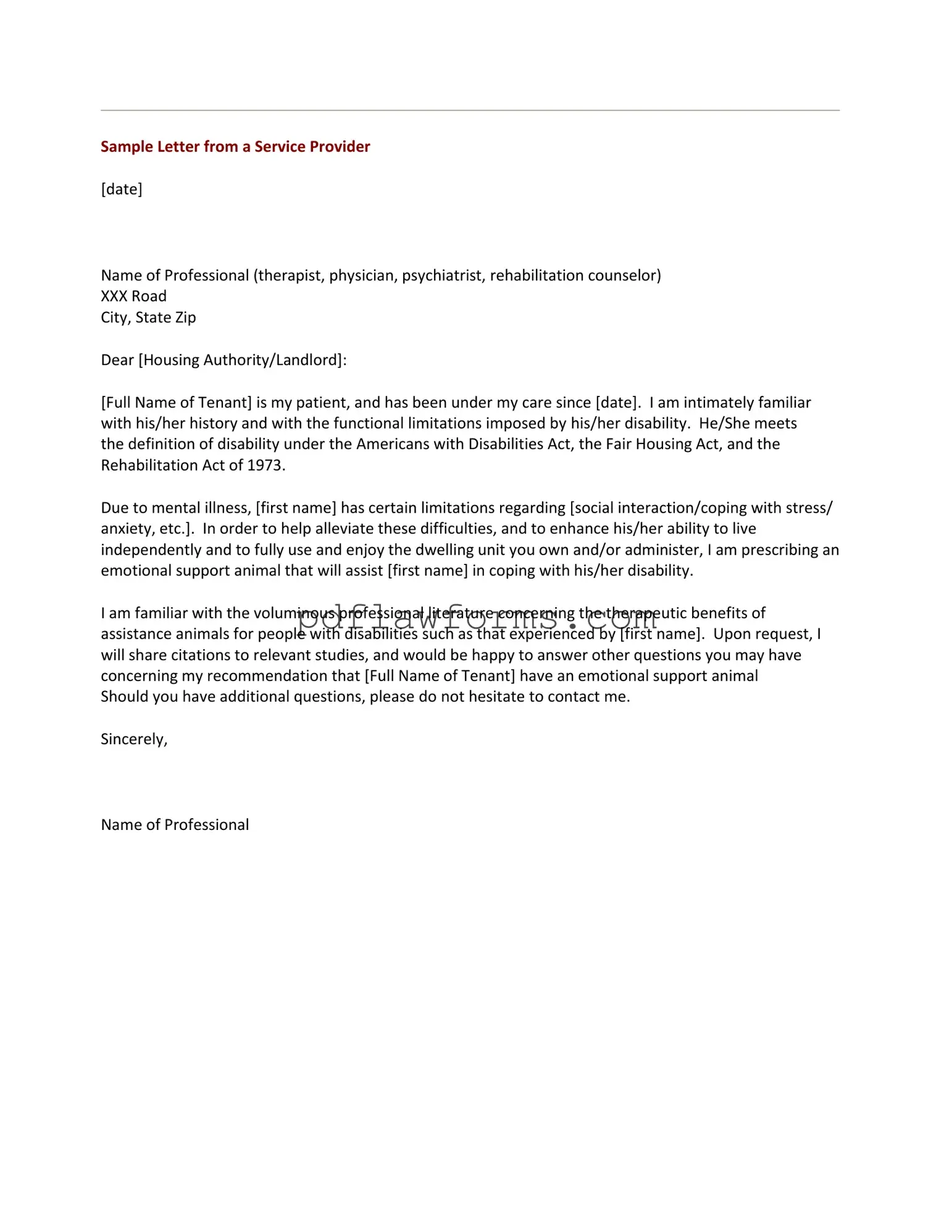Filling out the Emotional Support Animal (ESA) Letter form can be a straightforward process, but many individuals encounter common mistakes that can lead to delays or complications. One frequent error is providing incomplete information. It is crucial to ensure that all required fields are filled out accurately. Missing details can result in the letter being deemed invalid.
Another common mistake is failing to include the appropriate documentation from a licensed mental health professional. The ESA letter must be signed by a qualified individual who can attest to the need for the emotional support animal. Without this verification, the letter may not hold up under scrutiny.
Some individuals mistakenly use outdated forms. It is essential to use the most current version of the ESA Letter form, as requirements may change over time. Using an old form can lead to unnecessary complications when submitting the letter.
Additionally, people often overlook the importance of clarity in their explanations. When detailing the need for an emotional support animal, it is vital to articulate the specific emotional or psychological challenges faced. Vague descriptions can weaken the letter’s effectiveness.
Another issue arises when individuals fail to provide contact information for their mental health provider. This omission can hinder the verification process and delay the acceptance of the ESA letter. Always ensure that the provider’s contact details are included and accurate.
Some applicants neglect to check the spelling of names and other critical information. Errors in names, addresses, or dates can lead to confusion and may result in the rejection of the application. A careful review of the form before submission can help avoid this issue.
People sometimes forget to keep a copy of the completed ESA Letter form for their records. Having a copy is essential for future reference, especially if questions arise about the letter or if it needs to be presented again.
Another common mistake is not understanding the specific requirements of the housing provider or airline. Each entity may have different criteria for accepting an ESA letter. It is advisable to check these requirements beforehand to ensure compliance.
Some individuals may also submit the letter without a proper date. An ESA letter should be current and not outdated, as some organizations require that it be issued within the last year. Failing to date the letter can lead to complications.
Lastly, many people rush through the process, which can lead to mistakes. Taking the time to carefully complete the ESA Letter form, review it, and ensure that all necessary components are included can significantly enhance the likelihood of acceptance.
